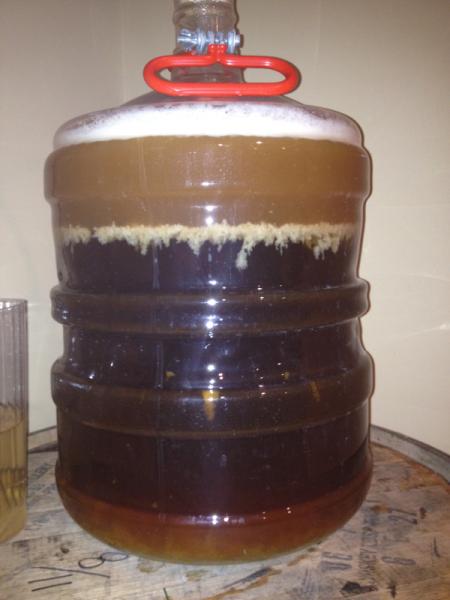EddieTheBrewerLADET
Well-Known Member
3 days into fermentation of my 90 Min IPA Clone...this is the color of my beer in the fermenter. WHAT is going on?!




That's trub & yeast clouding it up during initial fermentation. It swirls up & down during that time & settles out after initial ferment is done.
Whats grains did you use?
What are you doing sampling on day 3? Leave it be man!
My american pale ales often go into the fermenter looking like coffee with a splash of milk, then look like orange juice after a couple days. Let it go. It will be fine. Throw a t-shirt over it and forget about it.
I hear ya but doesn't that color look AWFULLY pale light for a 90 Min??
9.15 lbs of pale malt extract
1 lb of DME
1.5lb mix of biscuit, brown and the third Im not recalling currently.
How does it taste?
Pretty light malt bill... probably about right.
If fermentation has begun there should be a whirlwind of activity in the fermenter. Enough so that it would be mixed in. I have used top up water in the past and failed to stir it in well so there was quite the layer break. Aside from useless hydrometer readings it all worked out just fine.Is there a chance that the top 1/4 or so of the fermenter is just diluted with yeast and the majority of the color is sitting below?
It tastes like it looks....light, and not like a 90 min IPA.. I followed this recipe very thoroughly, and with all that extract Im having a hard time understanding how it got this color...
Also, its got a slight carbonation to it. HOW? Haha
Where did you get the recipe for the 90-minute IPA?
Your grain bill is kind of light (minus the missing ingredient) and looks about right for that sample. Particles in suspension will lighten a beer's color, but since 90minute is pretty amber (IIRC) this is way too light to be right.
I'm guessing the recipe was suspect or one of the ingredients was mistaken for something else or swapped by accident with something else.

Look at yours. Does it look like that?
It's been 3 days! 3 days I say! Give some times for the yeasties to clear up. I'm betting that sample you took from the top was 70% krausen and suspended yeast.
And if it stays light, put blue food coloring in it. Not sure why, it just feels like the right thing to do
It tastes like it looks....light, and not like a 90 min IPA.. I followed this recipe very thoroughly, and with all that extract Im having a hard time understanding how it got this color...
Also, its got a slight carbonation to it. HOW? Haha
is it possible all the goodies, flavor and color are just tucked below??
Enter your email address to join: